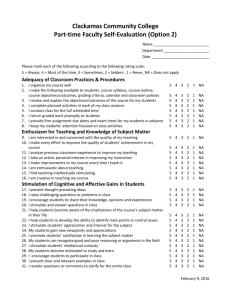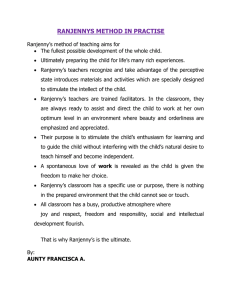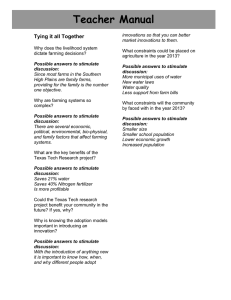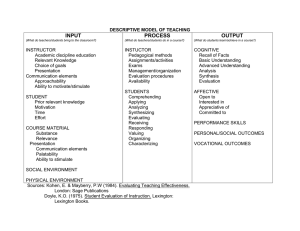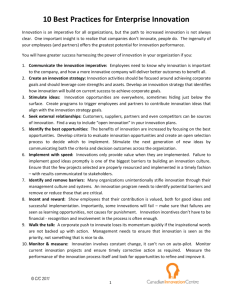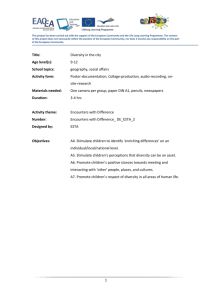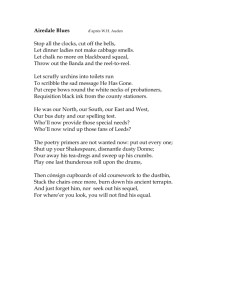Making sense of the world - 5 ways to promote learning
advertisement
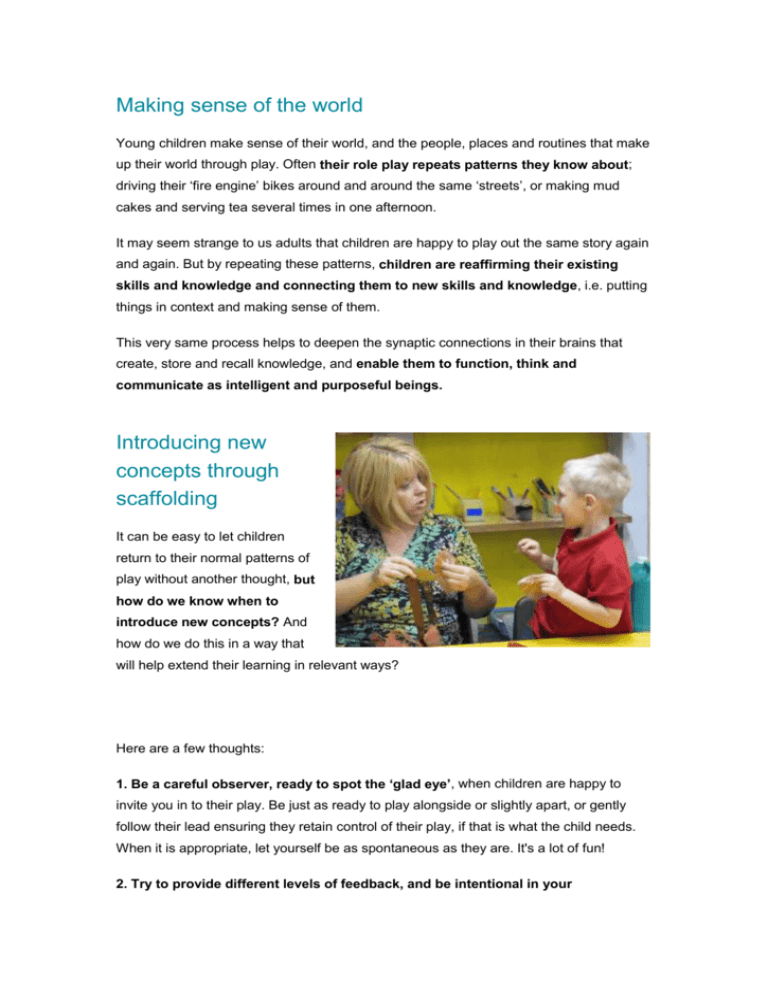
Making sense of the world Young children make sense of their world, and the people, places and routines that make up their world through play. Often their role play repeats patterns they know about; driving their ‘fire engine’ bikes around and around the same ‘streets’, or making mud cakes and serving tea several times in one afternoon. It may seem strange to us adults that children are happy to play out the same story again and again. But by repeating these patterns, children are reaffirming their existing skills and knowledge and connecting them to new skills and knowledge, i.e. putting things in context and making sense of them. This very same process helps to deepen the synaptic connections in their brains that create, store and recall knowledge, and enable them to function, think and communicate as intelligent and purposeful beings. Introducing new concepts through scaffolding It can be easy to let children return to their normal patterns of play without another thought, but how do we know when to introduce new concepts? And how do we do this in a way that will help extend their learning in relevant ways? Here are a few thoughts: 1. Be a careful observer, ready to spot the ‘glad eye’, when children are happy to invite you in to their play. Be just as ready to play alongside or slightly apart, or gently follow their lead ensuring they retain control of their play, if that is what the child needs. When it is appropriate, let yourself be as spontaneous as they are. It's a lot of fun! 2. Try to provide different levels of feedback, and be intentional in your communications by using questions that will help stretch children’s enquiries, decision making and use of language, for instance. 3. Provide hints when asking questions, to enable children to think more deeply about something, e.g. ‘Have you thought about…’ or ‘What do you think of…’, keeping it meaningful to their play. 4. Offer a small range of different, but relevant, options to help trigger different pathways for their thinking and actions, e.g. (to a child playing with water) ‘I’ve just found a big sponge and a watering can. You are welcome to use them if you like?’ Think in advance of ways in which these might make a good fit and extend their thinking, rather than picking the first resources that come to hand. 5. Offer one or two open ended materials and resources that stimulate new activities, ideas, and games. Materials that have a less obvious purpose are much more likely to stimulate the imagination as children become expert at assigning them new uses designed specifically for their own purposes. Natural or ‘found’ materials lend themselves to this, such as branches, big stones, sheets of foil, small wheels, thin loose tyres, string, dustbin lids, plastic bottles, planks of wood, and so on.
